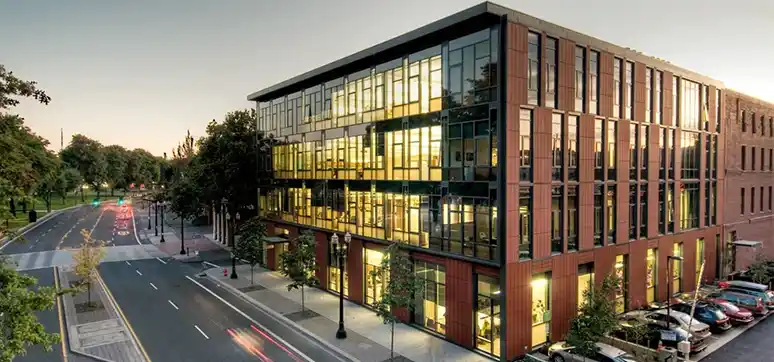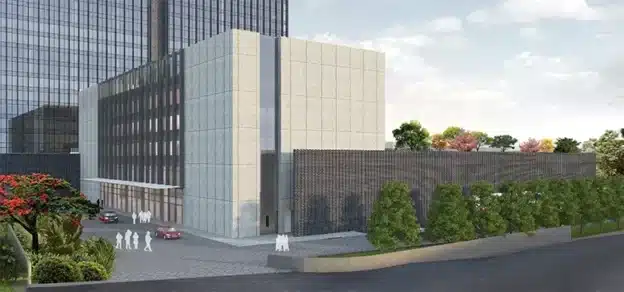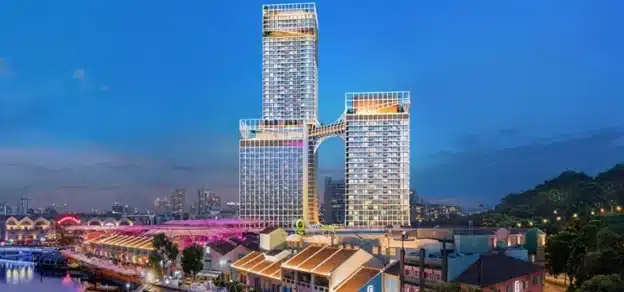The facade and cladding industry has gone through varied changes in the past decade. The construction industry is flooded with materials of different textures and colors. These days Architects and Designers use a variety of new materials for wall cladding, to provide each building with a unique enchanting appearance. While designing facades a lot of research is conducted to ensure selecting the right type of material that minimizes environmental impacts and maximizes a building’s life, energy, and performance.
Structural and Thermal Considerations
Cladding is an integral part of the wall assembly and plays a structural role by transferring wind loads, impact loads, and its self-weight back to the structural framework, responsible for the building’s overall thermal performance. A well-designed cladding can boost thermal performance, reduce air leakage, lower maintenance, and optimize natural daylighting into a building. Poor design or installation, however, will compromise cladding functioning and can result in safety issues.
Sustainable Considerations
Energy efficiency has been a key point of emphasis in the past few years in facade design and construction. Cladding materials that could adapt to local weather, and maintain thermal comfort, along with optimal light levels and energy consumption can be referred to as intelligent and responsive. High-performance intelligent facades are evaluated based on energy optimization, good acoustic qualities, and reduction in the use of resources and their inhabitants.
Cladding Materials
- Glass Reinforced Concrete- Glass Reinforced Concrete (GRC), also known as GFRC concrete, is a popular building material among architects and engineers for exterior cladding due to the versatility it offers and the fact it is around 80% lighter than pre-cast steel-reinforced concrete cladding.

- HPL- High-pressure laminate cladding offers a sustainable solution and is used in the form of insulation or combination with ACP or glazing or both. HPL cladding is available in an array of textures, shades, and styles and provides a polished and premium look. HPL clads are all fire-retardant by default and offer hassle-free maintenance as they are quite easy to clean.
- Rainscreen Cladding- The rain-screen cladding system is made with an insulation layer and a cladding material that is fixed to the building using a supporting structure to protect your core walls against moisture. Rainscreen cladding can be easily bent and rolled to fit architectural details, façade ends, and joints. These cladding systems increase thermal and acoustic insulation and are eco-friendly.

- Solar shingles- Solar Shingles are easier to install than traditional solar panels and are designed to blend in almost seamlessly with traditional roof tiles. Solar shingles provide a source of renewable energy, cut bill costs, and also provide weatherproof protection for the roof.
- Terracotta Cladding- Terracotta façade System is a kind of newest trend in the curtain wall system. ad orned with terracotta panels as a decorative element. It is a perfect fusion of traditional materials and modern architecture, featuring large format panels and heights that offer complete privacy and functionality.

Living Walls- Living walls are a unique form of façade design that improves facade thermal performance and reduces air pollutants and overall energy consumption. These green walls are visually stunning and bring new dimensions to architecture.

Conclusion- The global scenario of the building façade industry is undergoing several changes and development is massive. This has resulted in the evolution of new innovative façade designs. As the focus on the future comes into perspective, cladding materials should be more performance-based, where it does not remain as a facade element alone, but can harness energy for the building’s consumption making them highly sustainable, cost-effective, and beautiful exterior solutions.
Writer Credit: Ar. Jahnavi Malhotra














